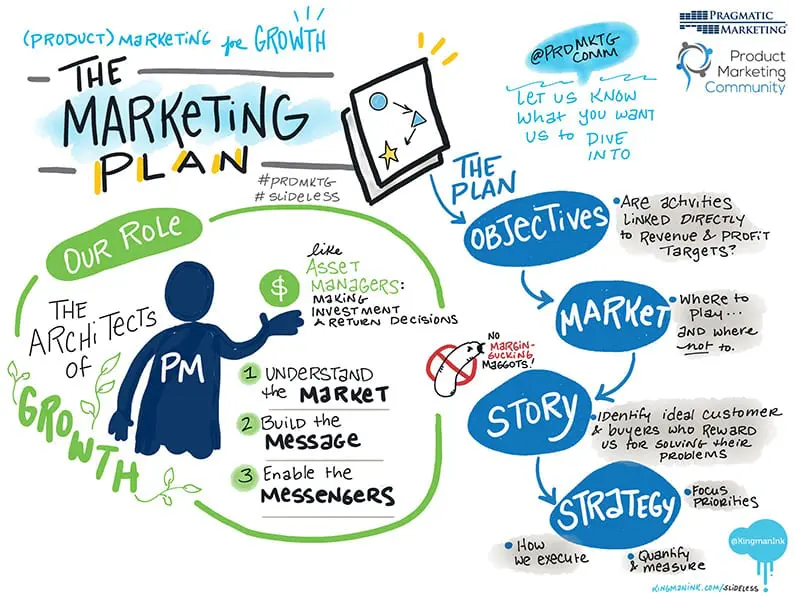How to Create a Marketing Plan
approx 8 minute read
Introduction to creating your marketing plan
Implementing marketing tactics without a plan in place can often result in a waste of resources and time.
Being clever and planning out your marketing practices will help your business to market your products and services effectively. Without draining your bank account.
In 5 steps, this article will show you the importance of outlining a marketing plan to achieve your business goals.
What is a marketing plan?
A marketing plan is a roadmap that outlines marketing tactics which a business can implement over the course of a year, a quarter and month.
It outlines the strategy that will be put into place in order to generate new leads and reach your target audience in order to increase your sales and brand awareness.

Importance of a marketing plan
One of the major benefits of having a marketing plan integrated into your business plan is that it helps to identify a businesses target market and the audience’s demographics.
Integrate a marketing plan into your business to help you focus your resources, while still carrying out your marketing activities during a period of economic downturn.
By doing this you can remain in front of your target audience, while also staying connected with customers.
It will help you to tailor your marketing efforts in order to, not only reach your target audience, but to also generate business.
So how do you create a bullet-proof marketing plan?
Step 1. Determine goals and objectives…
First and foremost, outline your business goals and the objectives you wish to achieve from your marketing strategies.
Use the SMART Technique to establish what you hope to get out of your marketing activities.
Determining your goals and objectives will help you to focus your efforts on marketing activities that will benefit your business and help you to meet these goals.
Value proposition & mission statement
Before outlining your business objectives and goals, it is essential that you are aware and understand your company’s mission statement and value proposition.
Your mission statement should be concise and succinct. It is a summary of the aims and values that the company or organisation upholds.
It is important to outline your mission statement when creating your marketing plan.
This will help you to be aware of what you hope to achieve through your marketing practices.
Similarly, a value proposition is the promise that a business makes to their customers when they purchase a product or service from them.
It summarises why a consumer should buy your products and services. This is of paramount importance when creating your marketing plan.
Your value proposition is a powerful tool which aids in driving sales and increasing your customer base.
Your value proposition provides your business with the opportunity to influence your customers’ decision making processes and this is why it should be integrated into your marketing plan.
Run SWOT Analysis
Strategically analyse and identify the strengths, weaknesses, opportunities and threats related to your business with a SWOT analysis.
This technique is worthwhile when creating your marketing plan as it works to your business’ advantage.
It shows you exactly where you excel and where there is room for improvement.
By running a SWOT analysis you can reduce the chances of your business failing by understanding the areas that require enhancing.
Develop a SWOT analysis to help you to eliminate and correct any shortcomings which you may have otherwise been unaware of.
Identify your strengths and opportunities to allow you to capitalise on and fortify your business as a key player within the market.
While analysing your weaknesses and threats, it can help you to understand what needs to be done in order to give your business that competitive advantage and strengthen your business going forward.
But how do you put your SWOT Analysis into action? Check out this video by the Virtual Strategist which shows you the ins and outs of this technique.
And to make it even easier for you, we have attached below a free downloadable resource which will help you to plot out your own SWOT analysis.
Step 2. Determine your target market
Use your marketing plan to help you to identify your target market. Who they are? Where are they? And why they would want to use your product or service.
Identifying your target audience helps your business to develop effective marketing communications.
This cohort of people often share similar needs or characteristics that your business aligns with.
Your target market is often the end users that are most likely to purchase your products or services.
Understand your customer and define buyer personas
A buyer persona is a research-based profile that helps to define your ideal customer.
Buyer personas describe who your ideal customer is, what challenges they face and how they make decisions.
Develop personas for your business to ensure that all of your marketing activities both inbound and outbound are serving your customers’ needs.
To create a buyer persona follow these three points…
1. Identify your customers’ demographics.
-
-
- Age
- Location
- Language
- Spending power and consumer behaviours
- Interests
- Challenges
- Stage of life
-
2. Identify your customers’ pain points.
Figure out the issues and problems that face your target customer.
What barriers are in their way and what issues are they facing when it comes to the types of products and services that you offer?
Use social media to listen to their complaints and engage in sentiment analysis.
Social listening can help you learn a lot about your target market.
Learn about their issues to help improve your customer experience, while also tapping into the elements that they like about your competitor’s business.
It is a great way to improve your overall customer experience to engage your ideal customer.
3. Identify how you can resolve these pain points.
Listen to your customers’ issues and adjust to meet their needs.
Pivoting to resolve your target market’s needs will help your business win the attention and business of those that you are trying to reach.
Alter your thinking and consider how your products and service can make your customers’ lives easier or better.
Understanding this will help you to tailor your marketing strategies accordingly in order to appeal to this audience’s senses and grow your business.
Positioning as a factor in your Marketing Plan
Determine how customers perceive your brand within the marketplace.
Take control of the narrative and align your brand with the customers that you are trying to reach.
Through developing compelling branding and a strong marketing message, you can clearly communicate how you want to be perceived by your audience.
Implement the 4P’s: promotion, price, place and product, to identify how you want to be perceived.
Strategically marketing your brand in a certain way to create and establish a recognisable brand image in the minds of your audience is the ultimate goal.
Step 3. Determine your marketing budget
Have a marketing budget in place before you begin to plan your marketing activities.
Take into account all costs associated with marketing your business.
Include everything from marketing tools to website maintenance expense, graphic design to paid advertising, just to name a few.
Create a marketing budget in order to keep you financially on track.
Step 4. Analyse your market and competitors – competitive analysis
Create a competitive analysis to determine the strengths and weaknesses of your competitors in relation to your own business.
Applying these insights from a competitive analysis to your own marketing plan will help you to identify strengths and weaknesses that relate to your brand’s health, community management and content strategy.
This is vital to your brand’s success within the market as it allows you to improve your marketing activities in order to increase your lead generation and customer acquisition.
Run a competitive analysis to help you fine tune your unique selling point.
Differentiating your business from your competitors will help you to get in front of your target market and make your brand more memorable among this cohort.
Step 5. Determine your Marketing Strategies
Knowing who your customers are and where they are is half the battle. Actually, more like 80% of the battle.
Use the insights gathered from your marketing plan to tactically choose your marketing activities.
You should choose your marketing strategies with your buyer persona in mind.
Marketing strategies that work best for your business
Determine which marketing practices will be most effective for you and your business when reaching your target market.
Having a blended marketing strategy which incorporates both traditional and digital marketing methods will help you to reach a wider audience.
Everything from your website, to social media marketing to traditional print advertising, will help your brand to improve its recognition among your audience.
As your recognisability increases across these marketing channels your audience will instinctively and subconsciously choose your brand when in need of your services.
However, remember there is no point wasting your marketing budget on activities that will not result in a return on your investment.
Be tactical. Choose strategies and platforms that will help you to get in front of the right people, and do not waste your resources engaging in strategies that will not benefit your business.
If you need help determining the best strategies for your business, get in touch with your local Nettl studio and we would be happy to help you.
If you are looking for a few ideas you can check out these other blog posts and see if any of the suggestions align with your target market.
Conclusion to Creating a Marketing Plan
Re-evaluate, Re-evaluate, Re-evaluate!
This should really be a 6th step – because it is THAT important.
Remember to evaluate – see what is working, what isn’t. Business is constantly changing, so adapt with it.
It is important to review your marketing plan not only monthly, but quarterly and yearly.
Make sure that the campaigns that you are putting out are effective and they are proving to be beneficial for your business.
If you are in need of any assistance in creating a marketing plan or planning your marketing your business, get in touch with your local Nettl studio .
We would love to have a coffee with you and learn more about your business.








